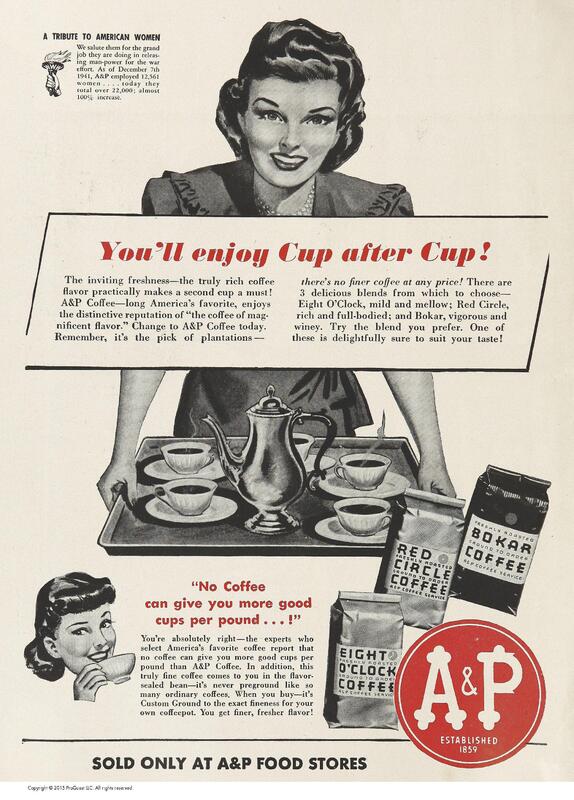During World War II: Women as Servers
While women serving or consuming coffee can symbolize similar things, women as servers more directly aligns with what advertisers expect of women in the home. Women as servers of food and beverage in advertising is nothing new. Katherine Parkin thoroughly outlines how advertisers used women in various ways to show subservience to men (2011). She highlighted seven themes of women’s portrayals in food advertising: women should show love through food, advertisers prey on women’s insecurities, women assert family’s status, women as subservient to men, women as responsible for family’s health, the use of beauty and sexuality to appeal to women, and women are responsible for children’s health (Parkin 2011). These themes play out in a variety of advertisements and you will see them here in coffee advertisements where women are servers. Here is an advertisement during World War II, showing a woman serving A&P’s coffee.
We can connect this to multiple themes presented by Parkin. The woman in this advertisement is thin and made up; she is graciously serving coffee that we can suspect she made. Here, the advertiser is utilizing beauty, subservience, as well as women’s ability to determine a family’s status. A&P is suggesting that there is no better coffee at any price, indicating that if women choose their coffee, they will be serving the best product.
Very notably, in the top left corner, the advertisement reads: “A tribute to American women. We salute them for the grand job they are doing in releasing man-power for the war effort. As of December 7th, 1941, A&P employed 12,561 women… today they total over 22,000; almost 100% increase.” It is striking that while A&P seems to be recognizing women’s increase in the workforce and their important role, their portrayal of women in their advertisements do not additionally reflect this. Nancy Walker notes that while there may have been praise for women stepping up for the war effort, magazines still made it clear that this was temporary and their real lives were as homemakers (2000, 90). This is done by simultaneously praising women for taking on paid labor for A&P Coffee while also portraying the woman as a homemaker and server of coffee.

